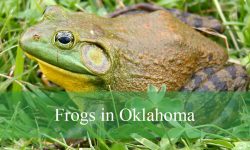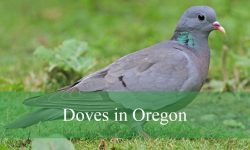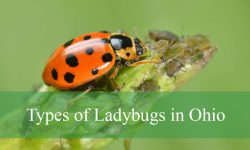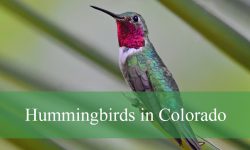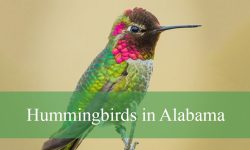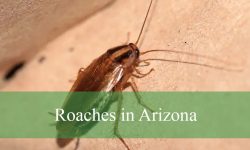If you’ve ever watched Florida’s flowers on a sunny morning, you’ve likely seen a variety of bees at work. These tireless pollinators fill gardens, wetlands, and fields with life, ensuring that countless plants and crops continue to bloom and bear fruit. Their presence is a sign of a healthy, thriving ecosystem.
Florida’s warm weather and long growing season make it one of the best places in the U.S. to observe bees. From large bumblebees to tiny sweat bees, each species has its own habitat, behavior, and beauty. Some live in colonies, while others build solitary nests in soil, stems, or wood.
This guide introduces 35 fascinating types of bees found throughout Florida, complete with pictures and identification details. By learning about these species, we gain a deeper appreciation of their role in pollination and discover simple ways to help protect them.
Common Types of Bees Found in Florida
Western Honey Bee (Apis mellifera)
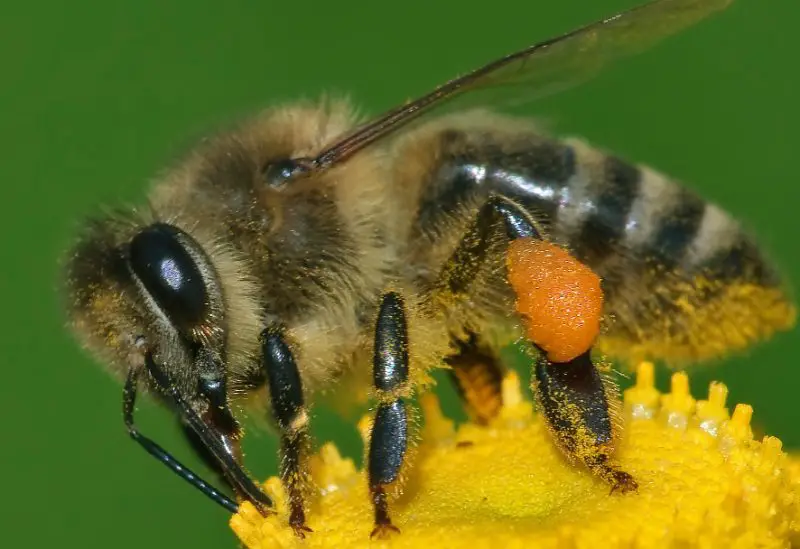
The Western Honey Bee is the most familiar and widespread bee species in Florida, known for its golden-yellow body with dark brown bands and slightly fuzzy thorax. Medium in size, usually about half an inch long, it has clear wings and dark legs that glisten in sunlight. These bees are often seen busily visiting flowers in gardens, farms, and wild landscapes.
They are highly social insects, forming large colonies that can number in the tens of thousands. Each hive contains a single queen, thousands of female workers, and male drones during breeding season. Through complex communication methods such as the famous “waggle dance,” they share the location of nectar-rich flowers with precision and efficiency.
Western Honey Bees thrive in a wide range of environments across Florida—from coastal plains and citrus groves to suburban gardens. Beekeeping is common in the state, and managed hives contribute significantly to pollination and honey production. They build intricate wax combs to store honey and raise young.
While capable of stinging, these bees are generally gentle and sting only in defense of their hive. Their venom is mild, though it can cause allergic reactions in sensitive individuals. As one of the world’s most important pollinators, the Western Honey Bee plays an irreplaceable role in Florida’s ecosystems and agriculture.
Africanized Honey Bee (Apis mellifera scutellata)
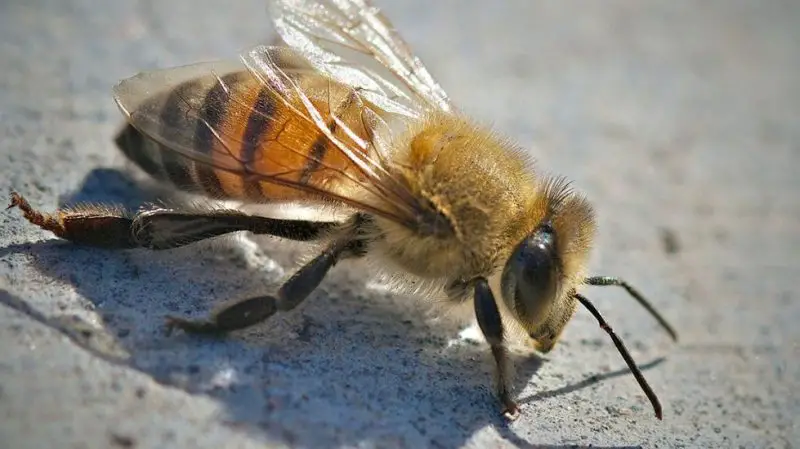
The Africanized Honey Bee, often called the “killer bee,” is a hybrid species that shares a close resemblance to the Eastern Honey Bee. They are slightly smaller and have a golden-brown coloration with darker bands. Despite their similar look, their behavior sets them apart.
This bee is known for its aggressive and defensive nature. Colonies react strongly to disturbances, and swarms may chase perceived threats for long distances. They tend to nest in smaller cavities, including walls, tree holes, and abandoned structures, making encounters with humans more likely in southern Florida.
Africanized Honey Bees are mostly found in tropical and subtropical regions. In Florida, they are concentrated in the southern and central parts of the state, where the climate supports their survival. They prefer open landscapes, wooded areas, and agricultural regions.
Their venom is no more potent than that of regular honey bees, but their tendency to attack in large numbers increases the danger. Extreme caution is advised when approaching wild hives or swarms suspected to belong to Africanized colonies.
Bumblebee (Bombus impatiens)
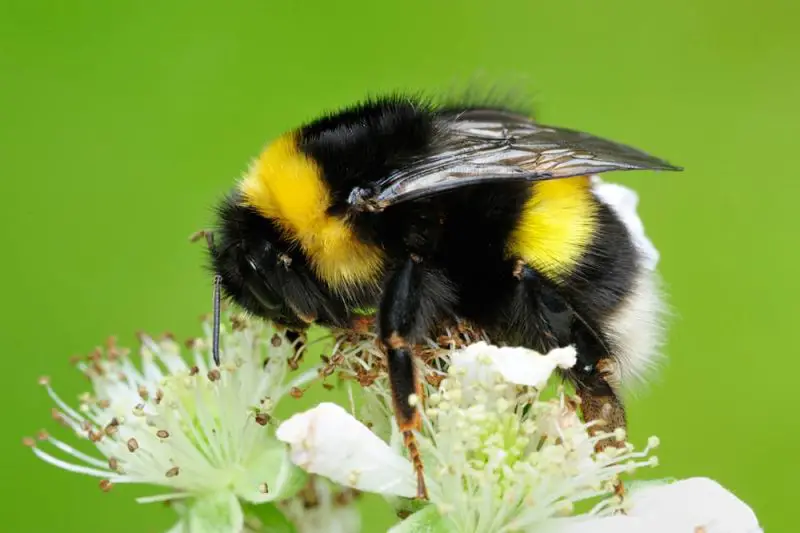
The Bumblebee is a large, fuzzy pollinator easily recognized by its round body covered in dense yellow and black hairs. Adults are typically about 0.5 to 1 inch long and have a robust appearance with a slow, deliberate flight pattern. Their gentle hum is often heard around flowering plants.
These bees live in small colonies of up to a few hundred individuals, usually nesting underground in abandoned rodent burrows or grassy areas. They are active throughout the warmer months and play an essential role in pollinating both wildflowers and agricultural crops like tomatoes and blueberries.
Bumblebees thrive across Florida’s meadows, forests, and gardens. Their thick fur helps them tolerate cooler temperatures compared to other bee species, allowing them to forage earlier and later in the day. They prefer moist environments with abundant flowering plants.
While capable of stinging multiple times, bumblebees are not aggressive and typically sting only if handled or threatened. Their sting causes mild pain and swelling but is not dangerous unless the person is allergic.
Carpenter Bee (Xylocopa virginica)
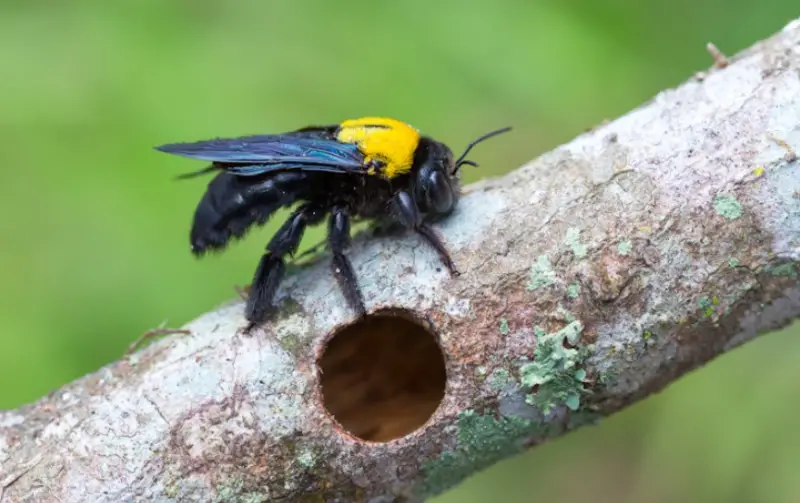
The Carpenter Bee is a large, shiny insect often mistaken for a bumblebee due to its size. However, its smooth, metallic-black abdomen distinguishes it from the fuzzy bumblebee. Males often hover near nests or flowers, while females bore into wood to create nesting tunnels.
These bees are solitary and do not form colonies. Females drill small, perfectly round holes in untreated wood, such as decks, fences, or eaves, to lay eggs. Despite their reputation for damaging wood, the harm is typically minimal unless infestations grow large over time.
Carpenter Bees are common throughout Florida, thriving in suburban and rural areas where exposed wooden structures are available. They are also active pollinators, frequently visiting flowering plants and fruit trees.
They are generally non-aggressive. Males cannot sting, and females will only do so if provoked. Their sting is mild, and these bees prefer to avoid confrontation. Observing them at work can be fascinating, as they are curious and often hover near humans without attacking.
Sweat Bee (Lasioglossum spp.)
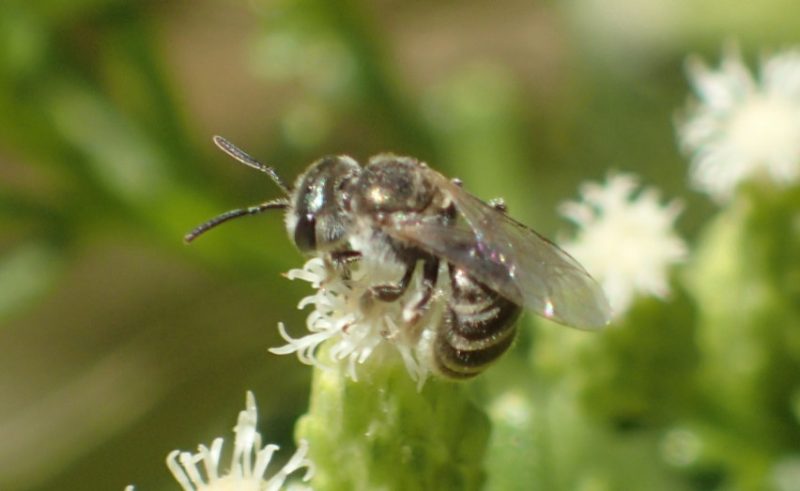
Sweat Bees are small metallic-green insects that sparkle in the sunlight. Measuring less than half an inch, they are among the smallest bees in Florida. Their iridescent bodies, often blue-green or bronze, make them stand out among other tiny pollinators.
They are named for their attraction to human sweat, which provides essential salts and moisture. These bees are solitary or semi-social, nesting in soil, sandy patches, or rotting wood. Females dig burrows where they lay eggs and store pollen for their larvae.
Sweat Bees are found throughout Florida, particularly in open fields, gardens, and woodland edges. They are most active during warm, sunny days and are important pollinators of wildflowers and crops such as alfalfa and sunflowers.
Their sting is mild and uncommon, usually occurring only if trapped against the skin. Despite their name, they are not aggressive and generally fly away when disturbed. Their shimmering beauty and small size make them a charming sight among Florida’s wildflowers.
Leafcutter Bee (Megachile spp.)
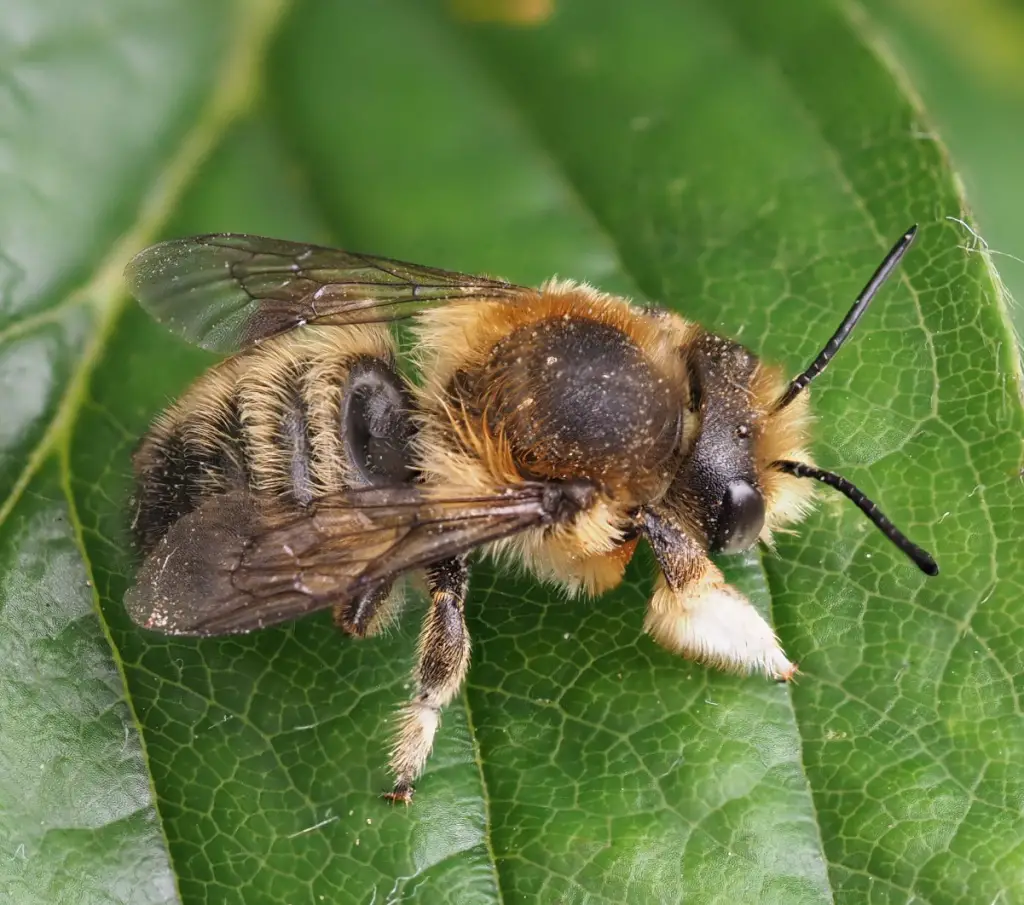
Leafcutter Bees are medium-sized insects known for their unique habit of cutting circular pieces from leaves. They have stout bodies covered in fine gray or brown hairs, and females often carry pollen on the underside of their abdomen instead of their legs.
These bees are solitary and build their nests in hollow stems, cracks, or soft wood. They line their nest cells with leaf or petal fragments to create protective chambers for their larvae. This distinctive behavior often leaves neatly cut holes in rose or lilac leaves.
Leafcutter Bees thrive throughout Florida in gardens, parks, and natural meadows. They are highly efficient pollinators and are particularly beneficial for fruit and vegetable crops. Their quiet nature makes them ideal for native bee habitats and backyard gardens.
Leafcutter Bees are non-aggressive and rarely sting. Even when handled, their sting is weak and harmless to most people. Their fascinating nest-building technique and gentle behavior make them one of the most beneficial solitary bees in Florida.
Mason Bee (Osmia spp.)
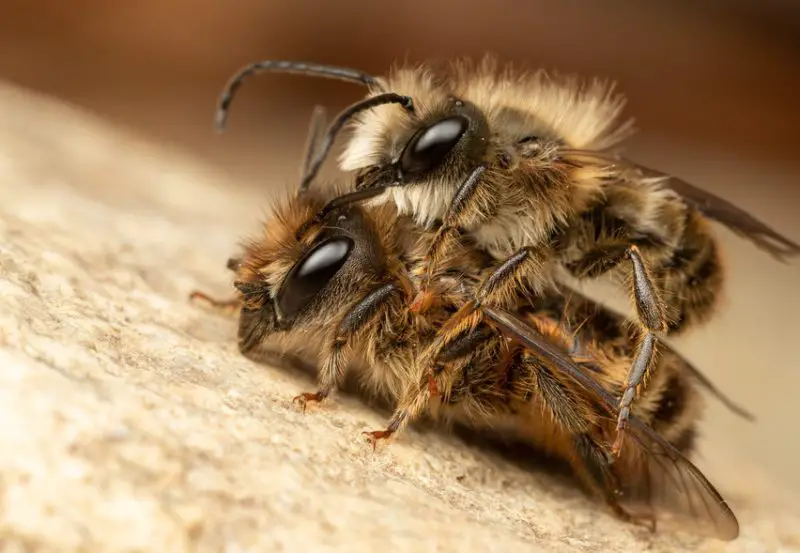
Mason Bees are small to medium-sized insects, usually dark metallic blue or green, with a robust and slightly fuzzy appearance. Unlike honey bees, they are solitary, with each female building her own nest. They get their name from their unique habit of using mud to seal off individual nest chambers.
These bees are early-spring pollinators, often active before many other species emerge. Females collect pollen on the underside of their abdomen and store it in hollow stems, cracks, or wood holes before laying an egg and sealing it with mud. Their methodical nest-building gives them their “mason” title.
Mason Bees are widespread throughout Florida, thriving in gardens, orchards, and woodland edges. They prefer habitats rich in flowering plants, especially fruit trees and early-blooming shrubs. Gardeners often encourage them by providing nesting tubes or bee houses.
They are non-aggressive and do not defend their nests, making them safe around humans. Mason Bee stings are rare and mild, occurring only if a female is trapped or squeezed. Their calm nature and efficient pollination make them valuable allies for both wild and cultivated plants.
Mining Bee (Andrena spp.)
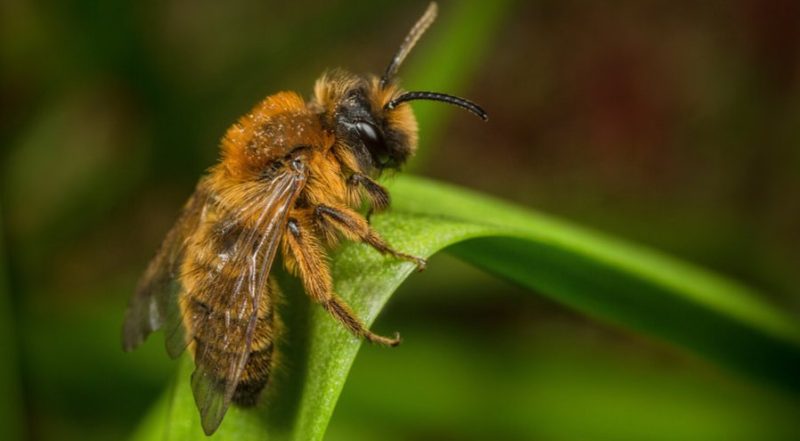
Mining Bees are small to medium-sized insects with slender, fuzzy bodies often covered in brown, gray, or reddish hairs. They have long faces and noticeable bands on their abdomens. Females are often seen digging into sandy or loose soil, creating small mounds at nest entrances.
These solitary bees emerge in early spring, when many fruit trees and wildflowers are in bloom. Each female excavates her own burrow, forming several small chambers where she lays eggs and stores pollen. The tunnels resemble tiny anthills scattered across lawns or paths.
Mining Bees are found throughout Florida, particularly in sandy regions, open fields, and garden soil. They prefer sunny areas with minimal vegetation cover. Their early activity makes them important pollinators for spring crops and native wildflowers.
They are harmless and non-aggressive, rarely stinging even when handled. Their stinger is weak and used only in self-defense. Despite nesting near human spaces, Mining Bees do not damage soil or structures and are beneficial for the ecosystem.
Long-Horned Bee (Melissodes spp.)
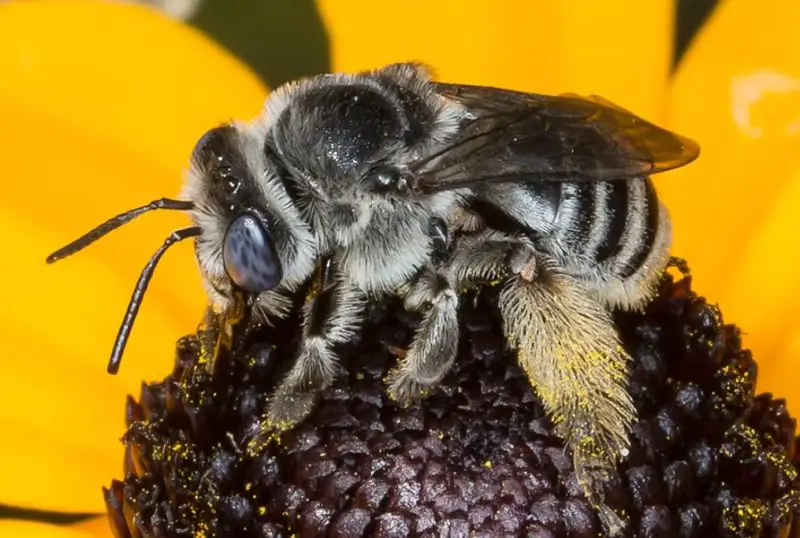
Long-Horned Bees are easily recognized by their long, curved antennae, especially on males, which can be nearly as long as their bodies. They are medium to large in size, with dense yellow or brown hairs that give them a fuzzy, bumblebee-like look. Their strong legs are often coated with pollen.
They are highly active during late summer and early fall, visiting sunflowers, asters, and other composite flowers. Females dig nests in bare soil, forming loose aggregations of burrows. Males can often be seen hovering near flowers or sleeping in clusters on stems.
These bees thrive in open, sunny areas such as prairies, meadows, and gardens across Florida. They favor dry soils and landscapes filled with native wildflowers. Their foraging behavior plays an essential role in pollinating many late-blooming plants.
Long-Horned Bees are gentle and unlikely to sting. Males cannot sting, and females do so only when handled roughly. Their curious and active flight patterns make them delightful to observe among Florida’s summer blossoms.
Blue Orchard Bee (Osmia lignaria)
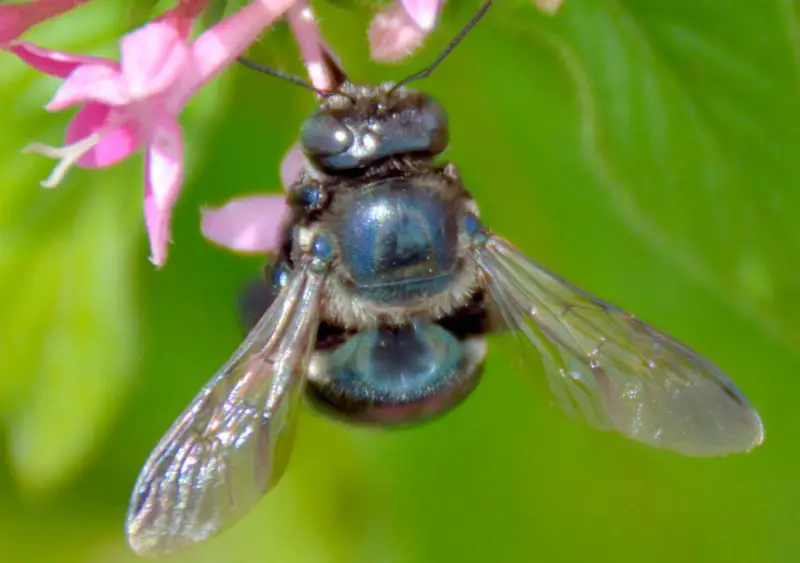
The Blue Orchard Bee is a striking metallic blue pollinator known for its efficiency in fertilizing fruit trees. Medium in size with a robust body and shimmering blue-green sheen, this bee is often mistaken for a fly at first glance but moves with a distinctly purposeful buzz.
It is a solitary species that nests in preexisting holes or hollow stems. Females line their nest cells with mud, store pollen and nectar, and seal each chamber after laying an egg. Their early-spring activity coincides perfectly with the blooming of apple, cherry, and plum trees.
In Florida, Blue Orchard Bees thrive in orchards, gardens, and forest edges where flowering trees are abundant. They prefer moderate temperatures and are most active during the early morning and midday sun. Gardeners often use artificial bee houses to attract and support their populations.
They are completely non-aggressive and rarely sting. Even when disturbed, they typically fly away rather than defend their nests. Their calm behavior and unmatched pollination efficiency make them favorites among orchard keepers and native bee enthusiasts.
Digger Bee (Anthophora spp.)
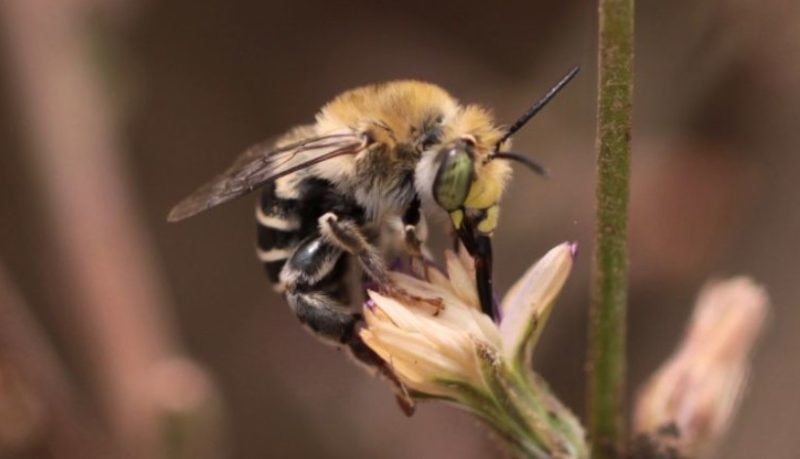
Digger Bees are robust, hairy insects resembling small bumblebees. They are fast fliers with dense gray, brown, or yellow hairs and powerful legs adapted for digging. Their bodies are about 0.5 to 1 inch long, and they are often seen hovering close to the ground near nesting sites.
These solitary bees nest in sandy or loose soils, where females excavate tunnels for their offspring. They often form loose colonies with many individuals nesting in the same area. Digger Bees are active during spring and early summer, collecting pollen and nectar from a wide variety of flowers.
They are common across Florida’s sandy habitats, including dunes, open fields, and dry banks. Their preference for well-drained soil makes them frequent visitors in natural preserves and rural areas. Their quick flight and loud hum are characteristic of their foraging behavior.
Digger Bees are non-aggressive and rarely sting unless directly threatened. Their sting is mild, and they avoid confrontation whenever possible. Despite their ground-nesting habits, they play a vital role in maintaining healthy ecosystems through efficient pollination.
Squash Bee (Peponapis pruinosa)
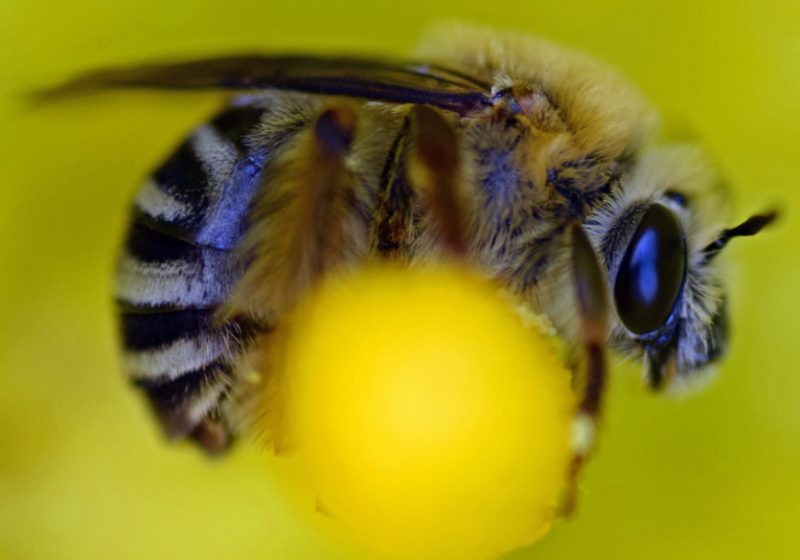
The Squash Bee is a medium-sized, fuzzy bee with golden-brown and black stripes, often mistaken for a honey bee. It has large eyes and long antennae adapted for early-morning foraging. Males are slightly smaller and can be seen sleeping inside squash flowers at dawn.
This species is a specialist pollinator of plants in the squash family, including pumpkins, zucchini, and gourds. Squash Bees emerge before sunrise to collect pollen, long before most other bees are active. Their timing ensures successful pollination of flowers that close by midday.
They nest in the ground, usually near cultivated fields or gardens where squash plants grow. Females dig burrows in loose, sandy soil and stock each chamber with pollen and nectar for their larvae. In Florida, they thrive in agricultural areas and home vegetable gardens.
Squash Bees are gentle and rarely sting. Their venom is weak and used only in self-defense. Because of their close relationship with squash plants, they are crucial for the production of many gourds and pumpkins throughout Florida’s warm climate.
Cuckoo Bee (Nomada spp.)
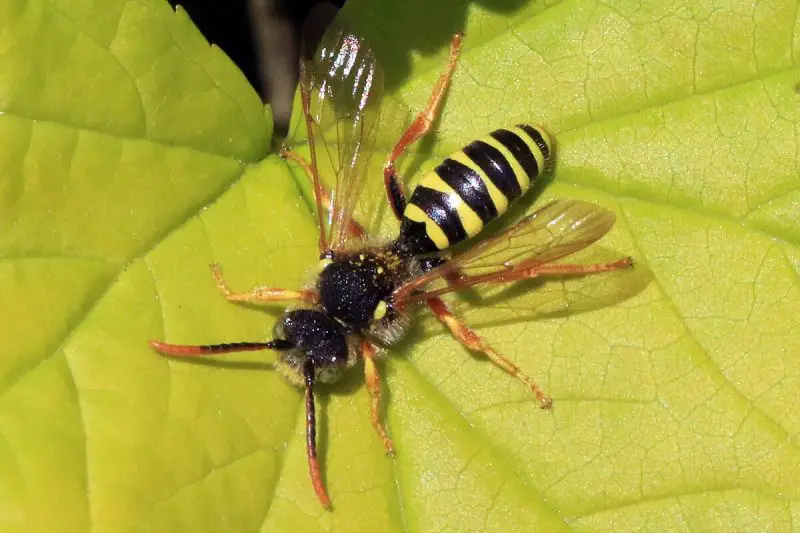
Cuckoo Bees are slender, wasp-like insects with smooth, shiny bodies marked in red, black, and yellow. Unlike most bees, they lack pollen-carrying hairs because they do not gather pollen for their offspring. Their long antennae and agile flight make them easy to spot hovering near other bees’ nests.
These bees are parasitic, laying their eggs in the nests of other solitary bees, such as Mining Bees or Leafcutter Bees. When the Cuckoo Bee larva hatches, it consumes the host’s pollen stores and sometimes the host’s larvae. This behavior mirrors that of cuckoo birds, giving them their name.
Cuckoo Bees can be found throughout Florida in sunny meadows, open woodlands, and gardens where their host species nest. They are often active in spring and summer, following the nesting cycles of their host bees. Their presence indicates a healthy, diverse bee community.
They are harmless to humans and rarely sting. Cuckoo Bees play a subtle role in maintaining ecological balance, as their parasitic nature helps regulate populations of other solitary bees, ensuring diversity within Florida’s pollinator ecosystems.
Augochlora Green Bee (Augochlora pura)
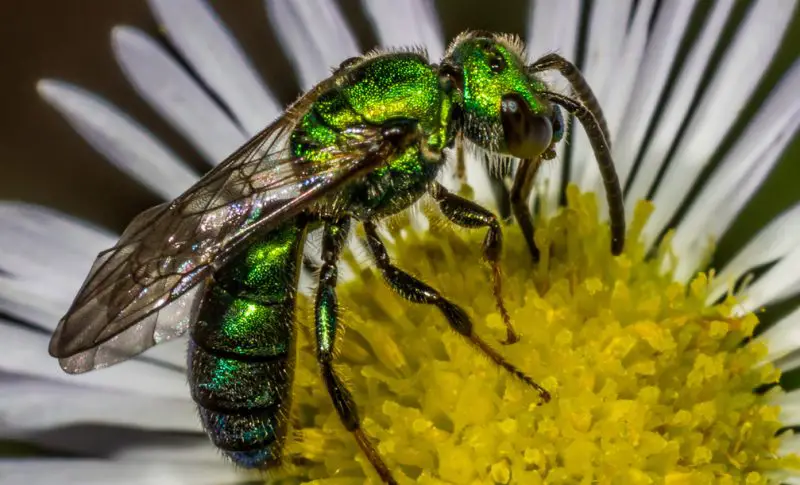
The Augochlora Green Bee is a dazzling metallic-green insect that shimmers like a tiny jewel in the sunlight. Small to medium in size, it has a slender body with a smooth texture and delicate wings. Its vibrant coloration makes it one of Florida’s most visually striking native bees.
These bees are solitary nesters that prefer rotting wood, hollow stems, or soft plant debris. Females excavate small tunnels and partition them into chambers for their eggs, sealing them with plant material. They are active throughout the warmer months, visiting a wide range of wildflowers and garden blooms.
Augochlora Green Bees are common across Florida’s forests, gardens, and coastal areas. They are particularly attracted to bright flowers and thrive in warm, humid environments. Their extended activity period makes them important pollinators for both native and ornamental plants.
They are docile and almost never sting. Their venom is mild, posing no threat to humans. Because of their metallic beauty and pollination benefits, these bees are often welcomed by gardeners as natural helpers and symbols of a healthy ecosystem.
Florida Bumblebee (Bombus pensylvanicus)
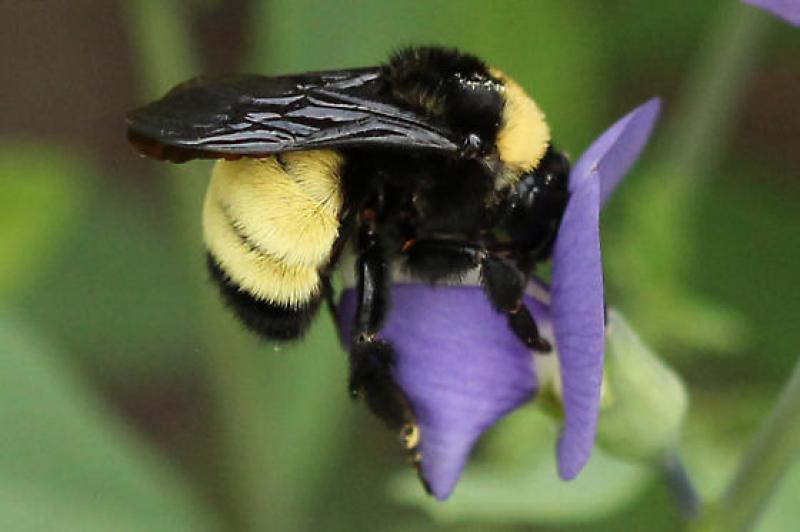
The Florida Bumblebee is one of the state’s largest and most recognizable native bees, with a black body adorned by bright yellow thoracic bands. Its dense, fuzzy coat gives it a soft appearance, and its strong, deep buzz can be heard as it moves from flower to flower.
This species forms small colonies, usually nesting in abandoned rodent burrows or grassy fields. The queen emerges in early spring to start a new nest, and workers appear later to collect nectar and pollen. They are especially active in summer, pollinating clover, milkweed, and goldenrod.
Historically widespread, the Florida Bumblebee has declined in many parts of its range due to habitat loss, pesticide exposure, and reduced flower diversity. It prefers open meadows, prairies, and gardens across northern and central Florida, where wildflowers are abundant.
Although capable of stinging multiple times, these bees are gentle and rarely aggressive. They will only sting to defend their nest. Conservation efforts that promote native wildflowers and pesticide-free landscapes are vital for the survival of this important pollinator.
Florida Long-Horned Bee (Melissodes communis)
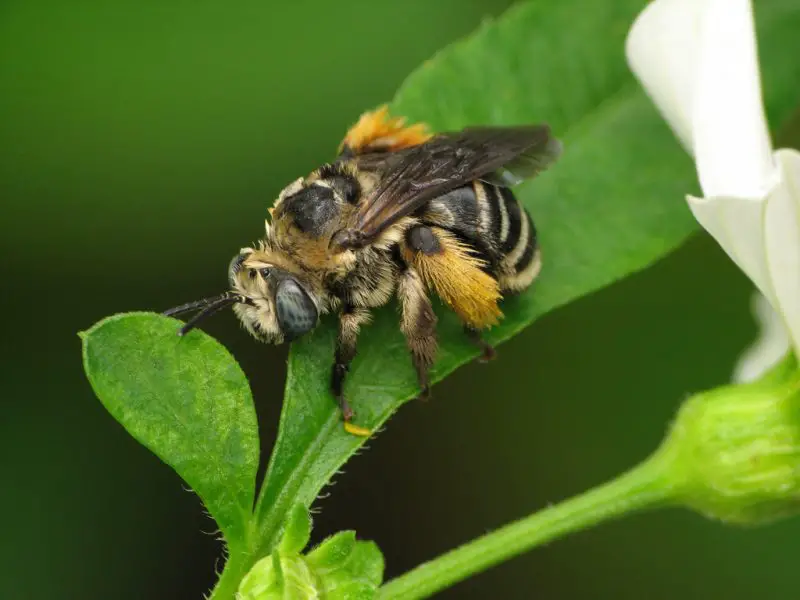
The Florida Long-Horned Bee is a medium-sized, fuzzy bee with dark brown to black coloring and bands of pale hair across its abdomen. Males are easily recognized by their extremely long, curved antennae that extend nearly the length of their bodies. Females are slightly larger, with shorter antennae and thick hind legs for collecting pollen.
These bees are most active during summer and early fall, when sunflowers, asters, and seaside goldenrods bloom. Males can often be seen patrolling flower patches or sleeping together in small groups on plant stems at night. Females dig burrows in sandy soil to create nests for their eggs.
They are particularly abundant along Florida’s coastal dunes, barrier islands, and open meadows, where native wildflowers flourish. Their preference for coastal habitats makes them well adapted to Florida’s warm and breezy environments.
Florida Long-Horned Bees are gentle and pose no threat to humans. They rarely sting, even when handled. Their pollination work benefits many native plants, especially those that bloom during the late summer season.
Coastal Plain Bumblebee (Bombus griseocollis)
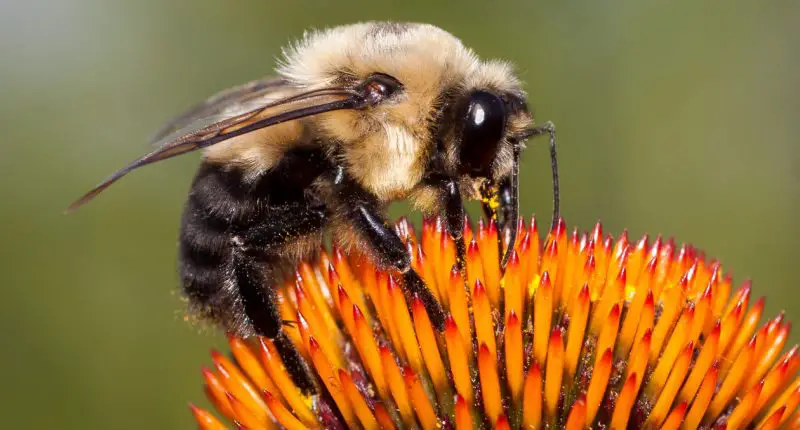
The Coastal Plain Bumblebee is a large, robust pollinator with a black abdomen and a distinctive yellow or gray collar around its thorax. Its thick hair and deep buzzing flight make it one of Florida’s most recognizable native bees. Adults typically measure about 0.8 to 1 inch long.
These social bees live in small colonies, often nesting underground in abandoned rodent holes or grassy banks. The queen emerges in spring to establish a nest, while workers appear later to forage. They are vital pollinators of clover, milkweed, and many wildflowers across the southeastern United States.
Coastal Plain Bumblebees thrive in open habitats such as prairies, meadows, and coastal grasslands. In Florida, they are often found in agricultural fields and natural preserves where floral resources are plentiful. Their adaptability allows them to forage in both wild and cultivated areas.
While capable of stinging more than once, they are not aggressive and usually avoid confrontation. Their sting is mild unless allergic reactions occur. Their presence is a sign of healthy ecosystems supporting diverse flowering plants.
Southern Carpenter Bee (Xylocopa micans)
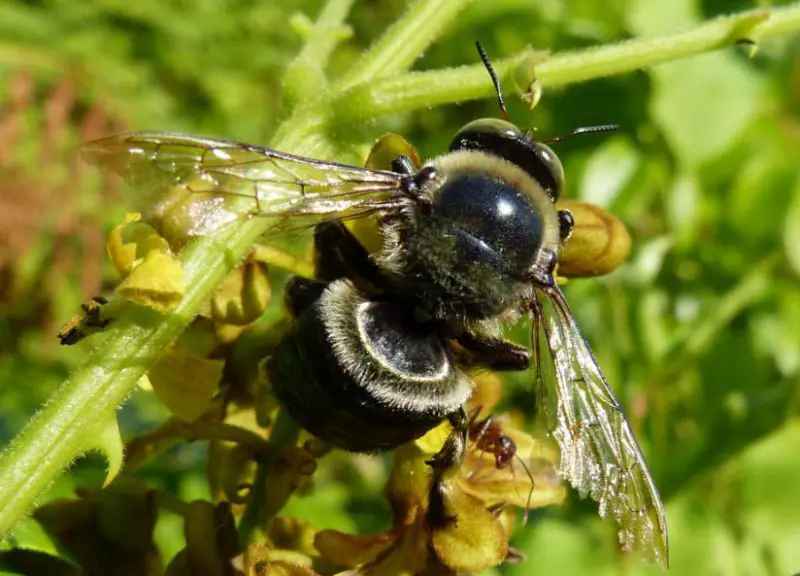
The Southern Carpenter Bee is a striking metallic blue-black species native to the southeastern United States. It is large and shiny, with a smooth abdomen and strong wings that shimmer with iridescent hues in sunlight. Males have lighter markings and are often seen hovering protectively near nest sites.
These solitary bees nest in soft or decayed wood, excavating tunnels for egg chambers. Females reuse old nests or expand existing ones, sealing each brood cell with wood particles. They are active during spring and summer, frequently visiting flowers like passionflower, hibiscus, and salvia.
In Florida, they are common throughout the southern and central regions, particularly in woodlands, gardens, and urban parks. They prefer warm, humid environments and play an important role as pollinators for both native and ornamental plants.
Southern Carpenter Bees are generally non-aggressive. Males cannot sting, and females will only do so if directly provoked. Their mild temperament and unique metallic appearance make them fascinating to observe around Florida’s flowering landscapes.
Large Carpenter Bee (Xylocopa subfasciata)
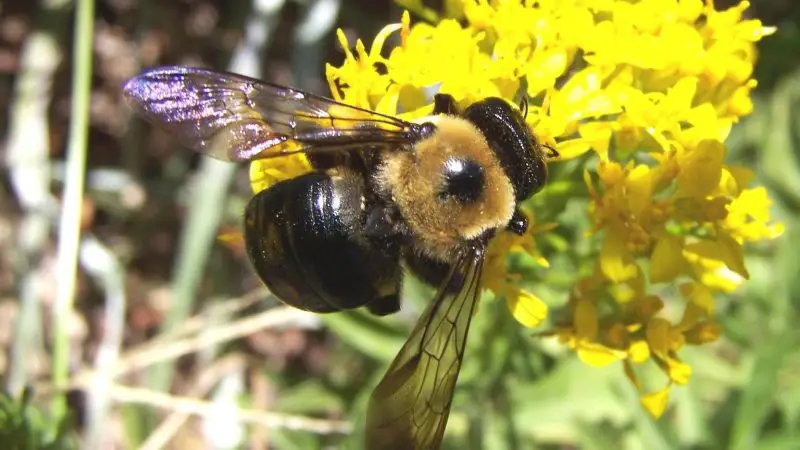
The Large Carpenter Bee is one of the biggest bees in Florida, with a shiny black body and faint yellowish or whitish hairs along its thorax. It closely resembles other carpenter bees but can be distinguished by its sheer size and deeper wing coloration.
This solitary species excavates nesting tunnels in softwood or decaying trees. Females use their powerful jaws to bore round openings, where they create chambers filled with pollen and nectar for their larvae. These bees are often active throughout the year in Florida’s tropical climate.
They are most frequently found in southern Florida, especially in tropical hardwood hammocks and coastal forests. Their activity peaks during warm, humid months when flowering trees and vines are abundant. They also visit gardens and forest edges where nesting wood is available.
Despite their large size and loud buzzing flight, Large Carpenter Bees are harmless and rarely sting. Males cannot sting at all. Their nesting activity may occasionally leave small holes in wooden structures but causes minimal damage overall.
Sunflower Bee (Svastra obliqua)
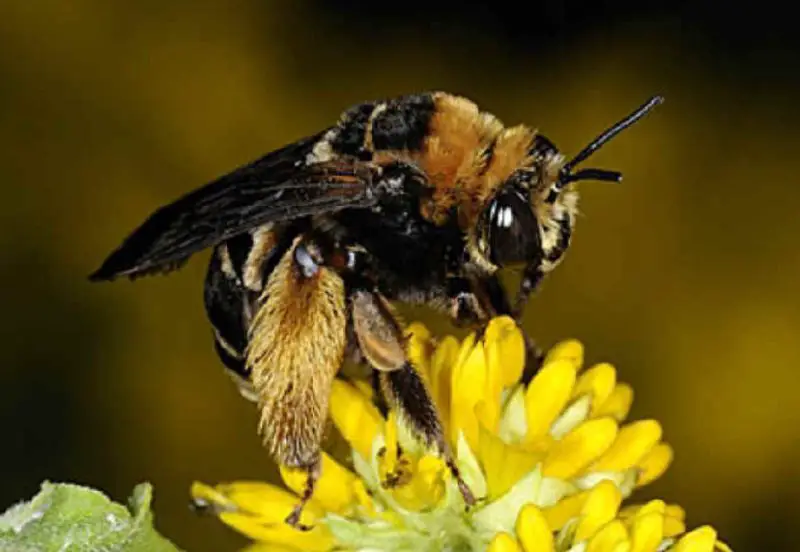
The Sunflower Bee is a large, fuzzy pollinator with a golden-brown body and dark bands on its abdomen. Its dense hair allows it to collect massive amounts of pollen, and its strong wings enable quick, darting flights between flowers. Adults are most active during the summer months.
This bee specializes in visiting sunflower blossoms and related plants in the aster family. Females dig nests in sandy or loamy soil, often forming loose aggregations. They line each chamber with pollen collected from sunflowers, ensuring efficient pollination for these bright yellow blooms.
In Florida, Sunflower Bees are abundant in prairies, fields, and roadside habitats where wild sunflowers grow naturally. They prefer open, sunny environments with dry soil conditions. Their peak activity coincides with mid to late summer when sunflowers are in full bloom.
They are calm, non-aggressive bees that rarely sting. Their close relationship with sunflowers makes them an essential pollinator for both native ecosystems and agricultural production across the southeastern United States.
Melitoma Bee (Melitoma taurea)
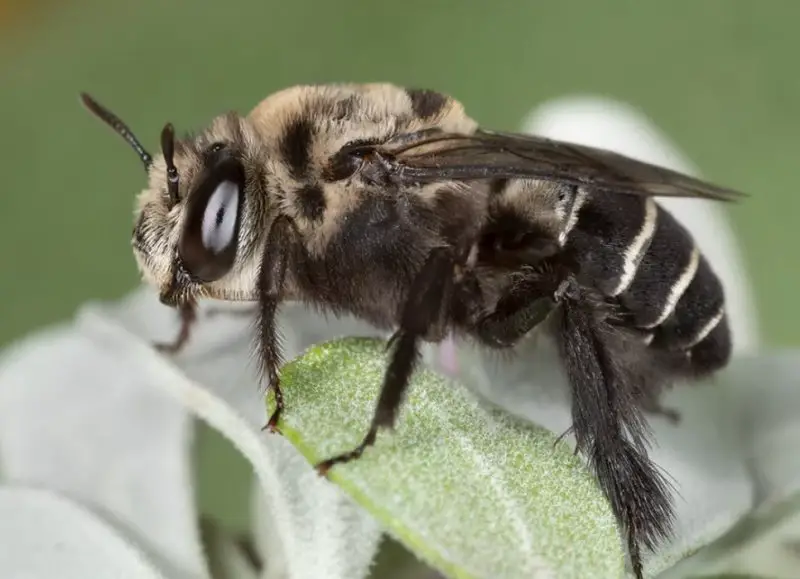
The Melitoma Bee is a medium-sized, fast-flying bee with dark brown to black coloration and light banding across the abdomen. Its dense body hairs help it carry pollen efficiently, and its wings have a slight amber tint that glows under sunlight.
These bees are ground-nesting and prefer clay or compacted soil banks, where females dig vertical tunnels. They are specialists on morning glory flowers, visiting them early in the day when the blooms first open. Their foraging pattern closely follows the daily rhythm of these flowers.
Melitoma Bees are found throughout Florida, particularly in areas with abundant morning glories, such as field edges, gardens, and coastal plains. They are often active during warm mornings and disappear by midday once flowers close.
They are non-aggressive and rarely sting, even when nesting sites are disturbed. Their strong link with morning glory plants makes them valuable for maintaining the health of native vine populations in Florida’s diverse habitats.
Ptilothrix Bee (Ptilothrix bombiformis)
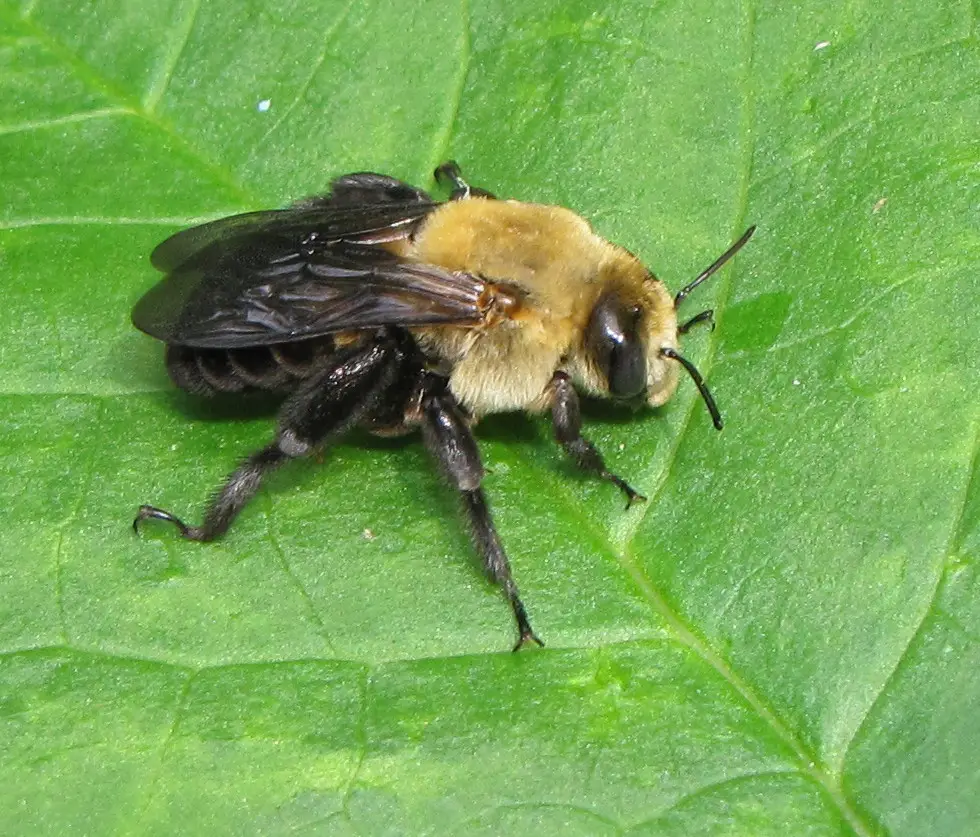
The Ptilothrix Bee, often called the Hibiscus Bee, is a large, fuzzy species resembling a small bumblebee. Its body is covered in golden-brown hairs, and it has strong legs designed for digging and collecting mud. Adults measure about 0.6 to 0.8 inches in length and have a loud, buzzing flight.
This bee is frequently found near ponds, streams, and other wet areas, where it gathers mud to build its nest chambers. Females dig burrows in damp soil and use the mud to construct smooth-walled tunnels for their eggs. They primarily visit hibiscus and related flowers for nectar and pollen.
Ptilothrix Bees are common throughout Florida’s wetlands, gardens, and coastal areas. They thrive in habitats where both water and flowering plants are available, particularly during late spring and summer. Their preference for wet environments makes them unique among ground-nesting bees.
They are gentle and rarely sting. Their mild venom poses little risk to humans. These bees are beneficial pollinators that help maintain healthy wetland ecosystems by pollinating moisture-loving plants.
Ceratina Small Carpenter Bee (Ceratina calcarata)
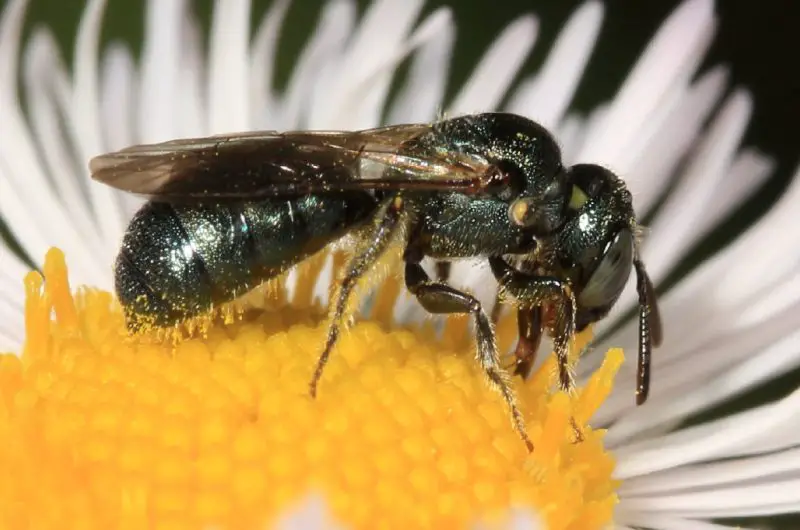
The Ceratina Small Carpenter Bee is a tiny, metallic green or blue bee, often less than half an inch long. Its sleek, shiny body gives it a jewel-like appearance, and it has delicate wings that shimmer in the light. Despite its small size, it is a highly active and efficient pollinator.
These bees nest inside hollow or pithy plant stems, such as elderberry, sumac, or blackberry canes. Females excavate the soft center of the stem and create a series of small brood cells. Unlike larger carpenter bees, they do not cause structural damage and prefer thin, dead plant stems.
Ceratina Bees are found throughout Florida in gardens, forests, and fields. They favor sunny habitats with plenty of wildflowers and nesting material. Their small size allows them to visit tiny blossoms that larger bees often overlook.
They are extremely docile and seldom sting. Their sting is mild and only used when directly handled. These bees are valuable for native plant pollination and are often among the first to appear in spring.
Halictus Sweat Bee (Halictus ligatus)
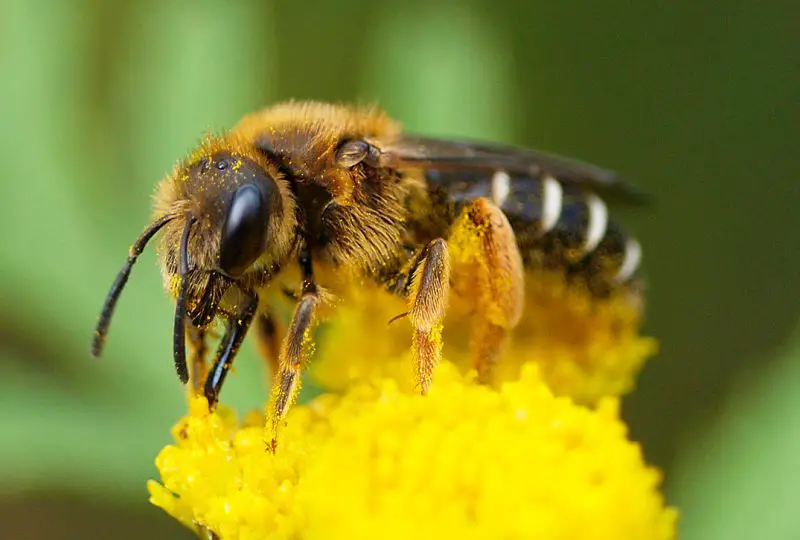
The Halictus Sweat Bee is one of Florida’s most common and widespread native bees. It has a slender, metallic-green body with pale yellow bands on the abdomen and measures about 0.4 to 0.5 inches long. Its name comes from its attraction to human sweat, which provides moisture and salts.
These bees nest in the ground, creating shallow tunnels in sandy or loamy soil. They can be solitary or semi-social, with several females sometimes sharing a nest entrance. They visit a wide range of flowers, including clover, asters, and goldenrod, making them versatile pollinators.
Halictus Bees thrive in nearly every part of Florida—from coastal dunes to urban gardens. Their adaptability and broad diet help them survive in both natural and developed environments. They are particularly active during warm, sunny days in spring and summer.
They are harmless and rarely sting. Their sting is weak and causes minimal discomfort. Because of their abundance and pollination activity, Halictus Bees play an essential role in maintaining Florida’s wildflower diversity.
Perdita Bee (Perdita texana)
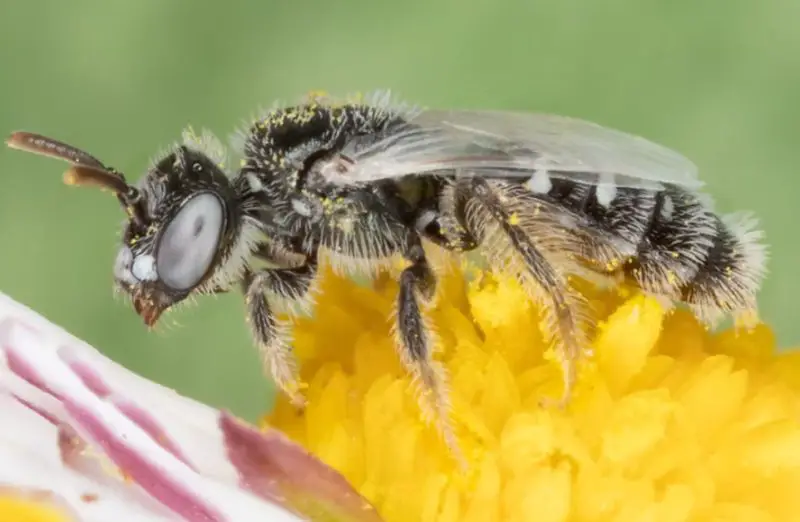
The Perdita Bee, or Texan Fairy Bee, is one of the tiniest bees in Florida, measuring only about 0.2 inches long. It has a pale yellow or tan body with delicate dark markings and short wings. Despite its minute size, it is an active and dedicated pollinator of small native plants.
This bee is a sand-dwelling species that prefers dry, open habitats. Females dig small tunnels in loose sandy soil, where they lay their eggs and store pollen collected from coastal scrub flowers and desert-like vegetation. They are often seen hovering low to the ground in sunny areas.
In Florida, Perdita Bees are found primarily in coastal scrublands and sandy inland ridges. Their close relationship with certain native plants makes them important contributors to pollination in fragile dune ecosystems.
They are too small to sting humans effectively and are completely non-aggressive. Their delicate presence indicates a healthy, undisturbed sandy habitat with diverse native flora.
Calliopsis Bee (Calliopsis andreniformis)
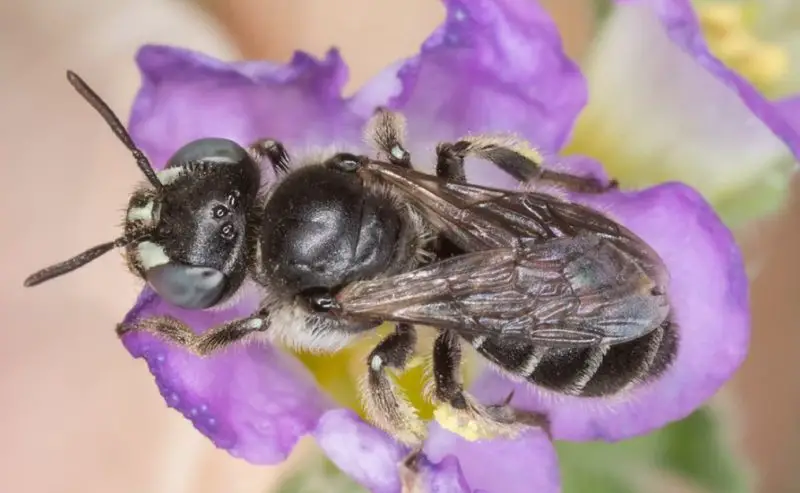
The Calliopsis Bee is a small, slender species with a black body and pale yellow facial markings. It has transparent wings and short, sparse hairs on its body. Adults are typically about 0.3 to 0.4 inches long and can be seen darting quickly among flowers.
These bees are solitary ground-nesters that prefer sandy or well-drained soils. Females dig tunnels where they construct brood cells stocked with pollen and nectar. They are particularly attracted to aster flowers, which provide abundant pollen sources during late summer.
Calliopsis Bees inhabit Florida’s sandy habitats, including coastal dunes, grasslands, and open pinewoods. They are active during warm months and are especially common in areas with dense wildflower growth. Their efficient foraging benefits both native and ornamental plants.
They are gentle and non-aggressive, rarely stinging even when disturbed. Their mild sting is harmless, and their small size makes them nearly impossible to notice except when seen on bright blossoms.
Triepeolus Cuckoo Bee (Triepeolus lunatus)
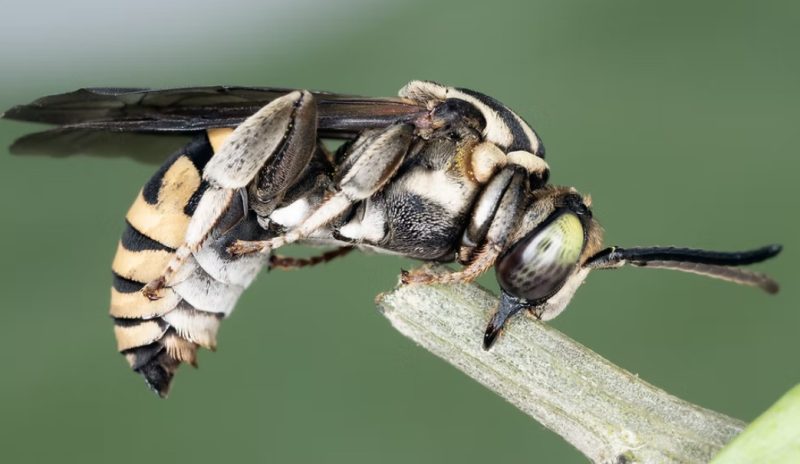
The Triepeolus Cuckoo Bee is one of Florida’s most striking bees, with bold black-and-white patterns covering its body. It has a stocky build, short antennae, and hairy patches on the thorax that give it a distinctive appearance. Its flight is strong and purposeful as it searches for host nests.
This species is parasitic and does not build its own nest. Instead, females lay their eggs in the nests of other solitary bees, particularly those of Svastra and Melissodes species. The emerging larva consumes the host’s stored pollen and occasionally the host larva itself.
Triepeolus Bees can be found across Florida’s open meadows, fields, and dunes, especially where their host bees are abundant. They are most active in late summer and early fall, coinciding with the peak nesting season of their hosts.
Despite their parasitic nature, they are harmless to humans and rarely sting. Their venom is mild, and they prefer to avoid contact. Their presence indicates a rich and balanced bee community, highlighting the diversity of Florida’s native pollinators.
Diadasia Bee (Diadasia afflicta)
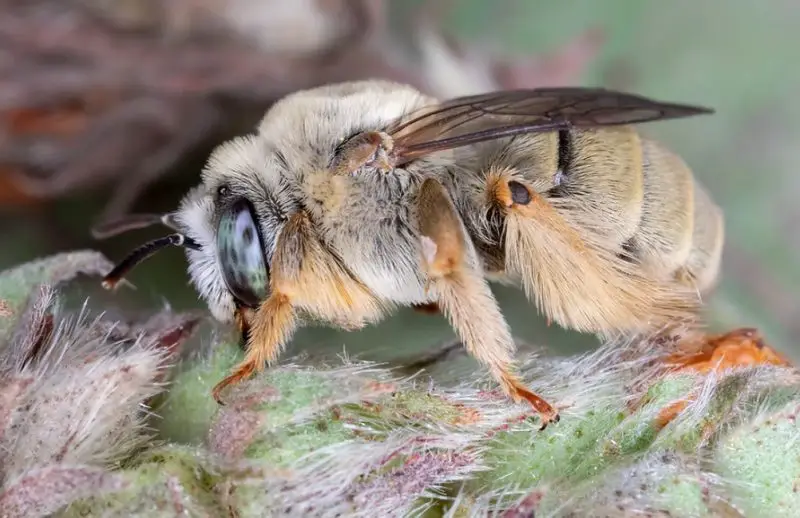
The Diadasia Bee, often called the cactus or prickly pear bee, is a medium-sized, fuzzy species with orange-brown hairs and dark bands across the abdomen. It has a stocky build and strong legs designed for digging and collecting pollen from cactus flowers. Males are often seen patrolling around blooming cacti during the early morning hours.
This bee is a specialist pollinator, relying almost exclusively on prickly pear and other cactus blossoms. Females gather pollen and nectar from these plants to stock their brood cells, ensuring the next generation’s survival. Their close relationship with cacti makes them vital to desert and scrub ecosystems.
In Florida, Diadasia Bees are most common in sandy scrublands, dunes, and dry prairies where prickly pear cacti grow. They are active primarily during spring and early summer, corresponding with cactus blooming periods. Their presence often signals a healthy native plant community.
They are gentle and rarely sting unless handled. Their venom is mild, posing little threat to humans. Observing them on cactus flowers offers a glimpse into one of Florida’s most specialized and fascinating pollinator relationships.
Nomia Bee (Nomia melanderi)
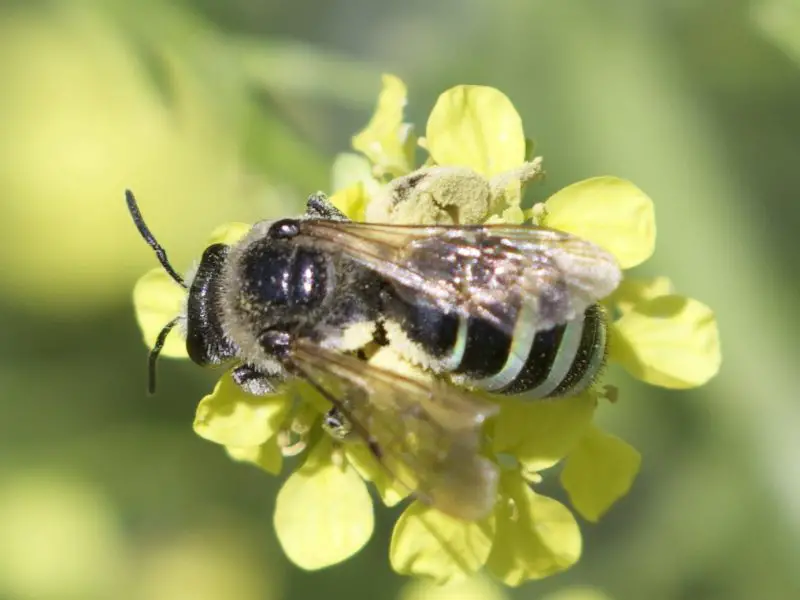
The Nomia Bee, also known as the Alkali Bee, is a shiny, metallic-green species with dark bands across the abdomen and a smooth, streamlined body. It measures about half an inch in length and is known for its shimmering appearance under sunlight.
These bees are solitary but form dense nesting aggregations, often in salty or alkaline soils. Females dig tunnels in compact ground and create chambers stocked with pollen for their larvae. They are efficient pollinators of alfalfa and other flowering crops, contributing greatly to agricultural productivity.
Although native to the western U.S., Nomia Bees are occasionally found in parts of northern and central Florida, where suitable soil and flower conditions exist. They thrive in open, sunny habitats such as grasslands, pastures, and agricultural fields.
They are non-aggressive and rarely sting, even when approached closely. Their gentle behavior, along with their exceptional pollination efficiency, makes them a valuable part of Florida’s diverse bee fauna.
Lasioglossum Zonal Sweat Bee (Lasioglossum zephyrum)
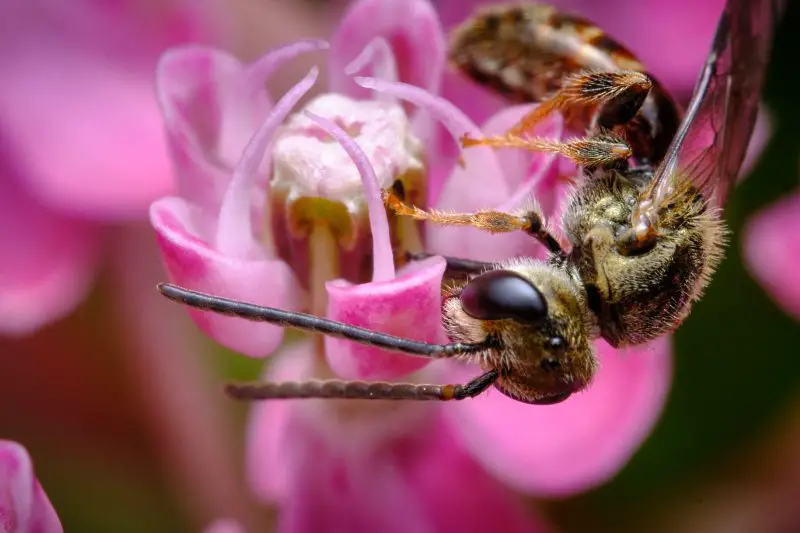
The Lasioglossum Zonal Sweat Bee is a small, metallic-green to bronze insect with delicate wings and fine body hairs. Adults measure less than half an inch long and are common visitors to garden flowers throughout the warmer months. Their subtle shimmer often catches the light as they move between blooms.
This species is semi-social, forming small colonies with a single queen and worker females. They nest in the ground, preferring sunny, well-drained soil in lawns, gardens, and meadows. The bees are generalist pollinators, visiting a wide variety of flowers, including daisies, asters, and clover.
In Florida, they are abundant statewide and remain active for much of the year, especially in the mild southern regions. Their small colonies often go unnoticed, but they play an important role in pollinating ornamental and native plants in residential areas.
Zonal Sweat Bees are harmless and only sting if trapped. Their sting is weak, and their curious attraction to perspiration is harmless. They are an integral part of Florida’s urban and natural ecosystems.
Augochlorella Green Sweat Bee (Augochlorella aurata)
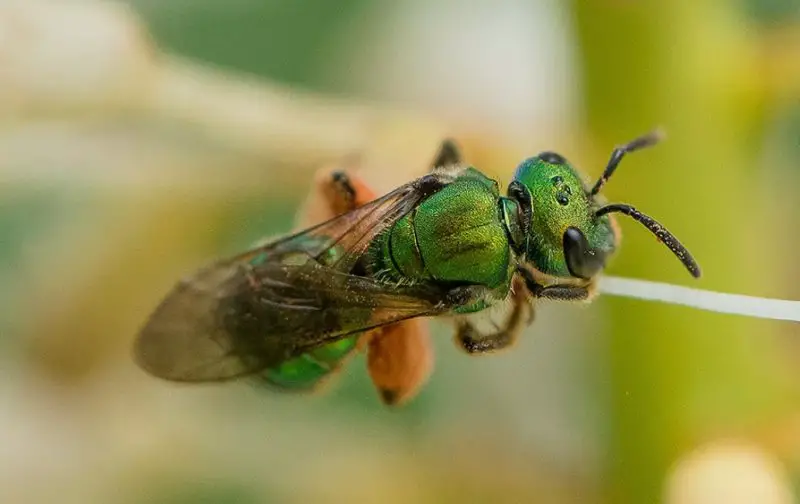
The Augochlorella Green Sweat Bee is a tiny, iridescent insect that glimmers in shades of green and gold. Measuring only about a quarter inch in length, it is easily recognized by its metallic sheen and quick, darting flight among flowers.
This bee is semi-social, with small colonies nesting in the ground or decaying plant material. Females work collectively to care for brood chambers, gathering pollen from wildflowers, clovers, and shrubs. Their year-round activity in Florida’s warm climate makes them highly effective pollinators.
They are most abundant in southern Florida, thriving in gardens, meadows, and forest edges. Their adaptability allows them to flourish in both natural and urban environments. They are among the few bee species active even in winter months in tropical areas.
Augochlorella Bees are docile and pose no threat to humans. Their sting is extremely mild and seldom used. Their shimmering presence and constant activity make them one of Florida’s most delightful native bees.
Exomalopsis Bee (Exomalopsis analis)
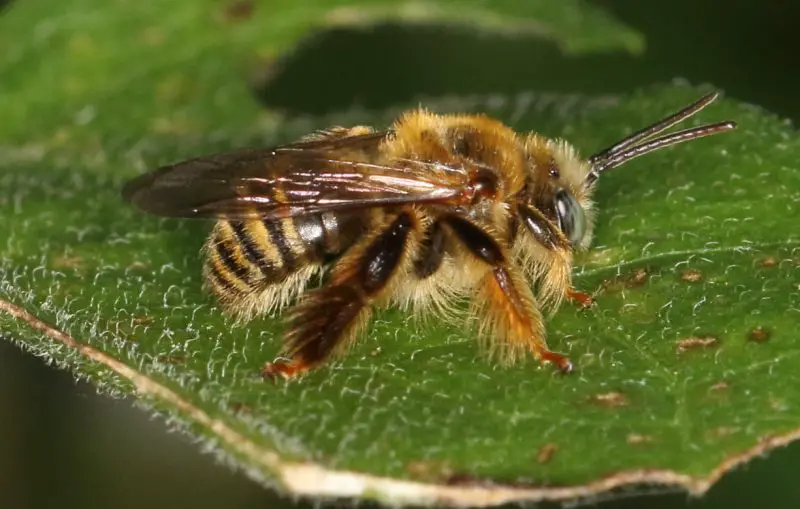
The Exomalopsis Bee is a small, fuzzy species with a grayish-brown body and dark stripes across the abdomen. Its dense body hair gives it a soft appearance, and its wings have a faint amber tint. Adults are usually about 0.3 to 0.4 inches long.
These solitary bees nest in sandy or loose soils near coastal or open areas. Females dig short tunnels where they store pollen and nectar for their offspring. They are active in warm months and frequently visit aster, sunflower, and morning glory flowers.
In Florida, they are found mainly along the coast and in dry grasslands, especially near dunes and scrub habitats. Their preference for sandy environments allows them to thrive in places where few other bees can nest.
Exomalopsis Bees are non-aggressive and rarely sting. Their venom is weak, and they typically fly away when disturbed. Their pollination of coastal wildflowers contributes to the stability of fragile shoreline ecosystems.
Hylaeus Masked Bee (Hylaeus affinis)
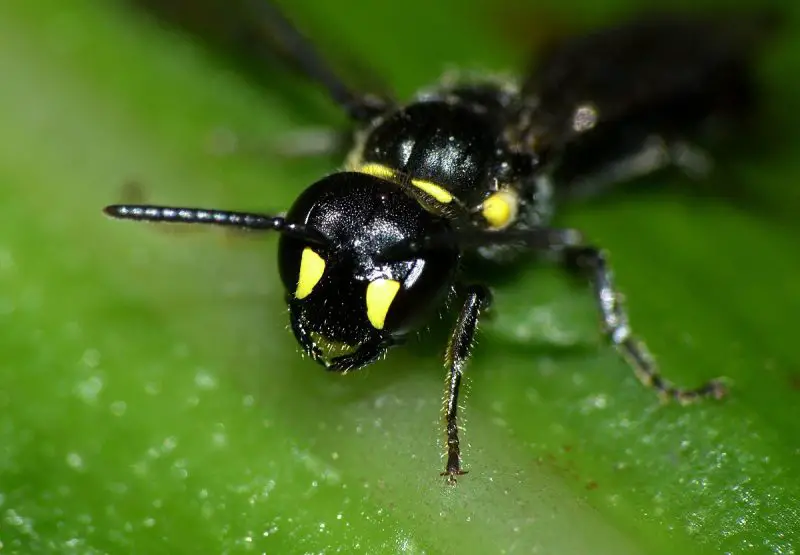
The Hylaeus Masked Bee is a small, sleek, black insect with distinctive white or yellow markings on its face and legs. Unlike many other bees, it lacks visible pollen-carrying hairs, giving it a wasp-like appearance. Adults are about 0.25 inches long and move swiftly between flowers.
These bees are cavity nesters, using hollow stems, twigs, or small holes in wood. Females line their nests with a waterproof secretion and store pollen mixed with nectar for their larvae. They are particularly active in spring and early summer when wildflowers bloom abundantly.
Masked Bees inhabit Florida’s meadows, gardens, and woodland edges. Their small size allows them to access tiny flowers and hidden crevices for nesting. They are important pollinators of native plants that rely on small insects for reproduction.
They are extremely gentle and seldom sting. Their mild nature, combined with their stealthy nesting habits, makes them one of the most inconspicuous yet vital pollinators in Florida’s ecosystems.
Anthidiellum Resin Bee (Anthidiellum notatum)
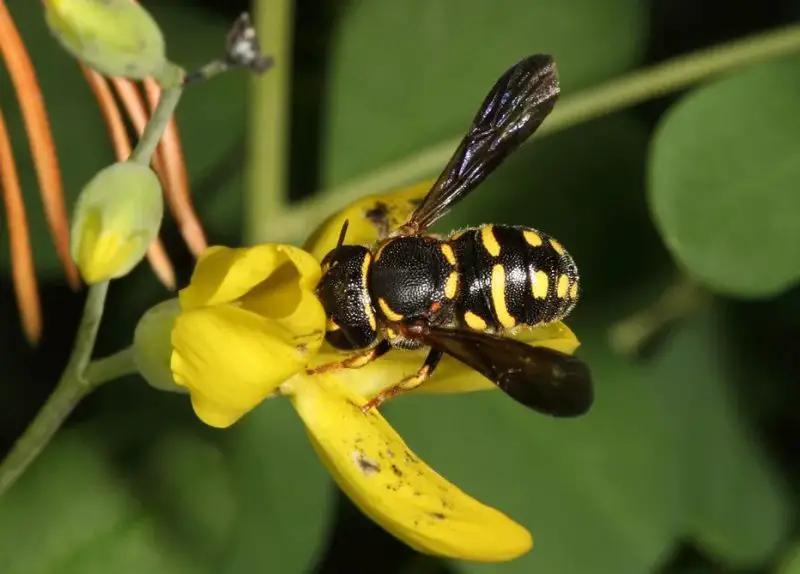
The Anthidiellum Resin Bee is a small to medium-sized bee with a black body marked by yellow bands. It has strong mandibles and a shiny appearance, resembling a tiny wasp. Females use resin and plant fibers to construct their unique, glossy nests.
These bees build their nests in hollow stems, cracks, or cavities, sealing each cell with resin to protect developing larvae. They gather resin from trees and plants, forming smooth, waterproof structures. Their favorite flowers include lantana, daisy, and sunflower species.
In Florida, Resin Bees are common in gardens, forest edges, and coastal habitats. They thrive in warm climates and remain active during long flowering seasons. Their use of natural resin helps prevent mold and predators from damaging their brood.
Resin Bees are gentle and rarely sting. Their sting is mild, and their industrious behavior makes them fascinating to watch as they collect resin and pollen simultaneously. They are a key example of nature’s architectural ingenuity among bees.
Megachile Sculptured Leafcutter (Megachile sculpturalis)
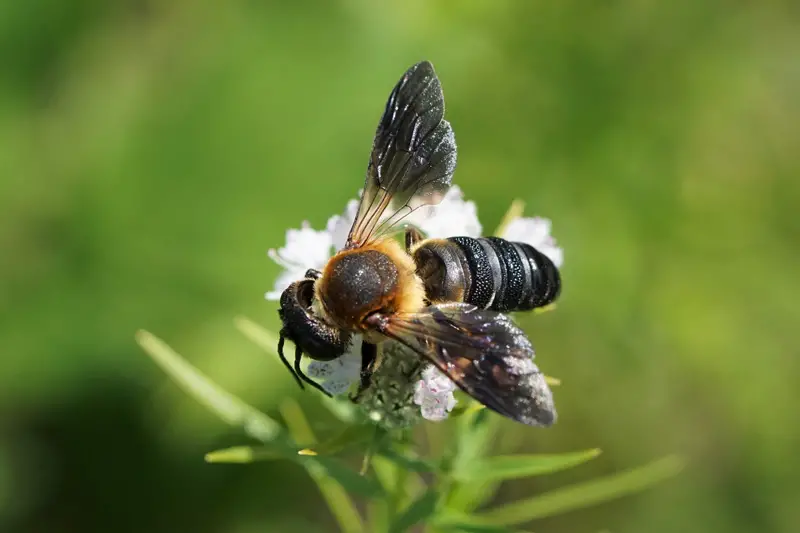
The Megachile Sculptured Leafcutter, also known as the Giant Resin Bee, is a large, non-native species introduced from Asia. It has a robust, blackish-brown body with amber wings and strong mandibles used for cutting leaves and bark. Adults are about 0.8 to 1 inch long, making them among the largest bees in Florida.
These bees nest in wood crevices, bamboo, and hollow stems. Females line their nests with resin, chewed wood fibers, or leaf fragments, creating neatly partitioned brood chambers. They are often seen visiting trumpet vine, wisteria, and other tubular flowers.
In Florida, the Sculptured Leafcutter Bee is established mainly in southern and central regions. It prefers urban gardens, parks, and forest edges where nesting materials are abundant. Despite being non-native, it coexists relatively peacefully with native bee species.
This species is not aggressive, though its size may appear intimidating. Stings are rare and mild. While not considered invasive, monitoring their populations helps ensure balance within Florida’s native pollinator communities.
Tips for Observing and Supporting Bees in Florida
Choose Native Flowers for Continuous Bloom
Planting native Florida flowers such as blanket flower, black-eyed Susan, coral honeysuckle, and goldenrod provides nectar and pollen throughout the year. These blooms attract a wide range of native bees, including bumblebees, sweat bees, and leafcutter bees. Select flowers with different bloom times so bees always have a food source from early spring to late fall.
Provide Safe Nesting Areas
Many Florida bees nest in the ground, wood, or hollow stems. Leave small patches of bare sandy soil, and avoid using mulch everywhere. You can also install bee hotels made of bamboo tubes or drilled wood blocks to help species like mason and leafcutter bees. Place them in sunny, sheltered spots facing southeast for warmth and protection.
Avoid Pesticides and Chemicals
Pesticides, especially neonicotinoids, are harmful to bees. Choose natural pest control methods or use insecticidal soaps only during times when bees are inactive (early morning or late evening). Healthy, pollinator-friendly gardens encourage natural pest predators and maintain ecological balance.
Keep a Water Source for Bees
Provide shallow water dishes or birdbaths filled with small pebbles where bees can safely land and drink. Bees need water to cool their hives and mix food for larvae. Replace the water regularly to keep it clean and prevent mosquitoes from breeding.
Observe Bees Respectfully
Watch bees quietly from a distance to avoid disturbing them. Move slowly around flowers and nesting areas, and never block their flight paths. Most native bees in Florida are gentle and will not sting unless handled roughly. A calm presence allows you to enjoy their fascinating behavior up close.
FAQs about Florida Bees
What time of year are bees most active in Florida?
Bees in Florida are active nearly year-round, thanks to the state’s warm climate. Activity peaks in spring and summer when wildflowers bloom abundantly, but some species—especially in southern Florida—remain active through mild winters.
Do all bees in Florida live in hives?
No, most of Florida’s native bees are solitary. They nest in soil, wood, hollow stems, or plant debris rather than communal hives. Only honey bees and a few bumblebee species form colonies with queens and workers.
Which bees are aggressive in Florida?
Most native bees are non-aggressive. The Africanized Honey Bee (Apis mellifera scutellata) is the only species known for defensive behavior when disturbed. Even then, it is mostly found in southern parts of the state, and attacks occur only when hives are threatened.
Are Florida bee stings dangerous?
Bee stings are typically mild, causing short-term pain or swelling. However, individuals with allergies should seek medical attention immediately. Solitary bees like mason, leafcutter, and sweat bees sting only when handled, and their venom is weak compared to that of honey bees.
How can I tell the difference between bees and wasps?
Bees generally have hairy bodies used for collecting pollen, while wasps are smooth and more slender. Bees are often seen visiting flowers, whereas wasps tend to hunt insects or scavenge for food. Watching their behavior around flowers can help identify them easily.
How can I help protect bees in Florida?
You can support bee populations by planting native wildflowers, reducing lawn areas, avoiding pesticides, and providing nesting habitats. Encouraging native plant diversity benefits not only bees but also butterflies, birds, and other pollinators essential to Florida’s ecosystems.
Are non-native bees harmful to local ecosystems?
Most non-native bees, such as the Giant Resin Bee (Megachile sculpturalis), coexist peacefully with Florida’s native species. However, careful observation is important to ensure they don’t outcompete or displace native pollinators. Maintaining diverse habitats helps balance bee populations naturally.

